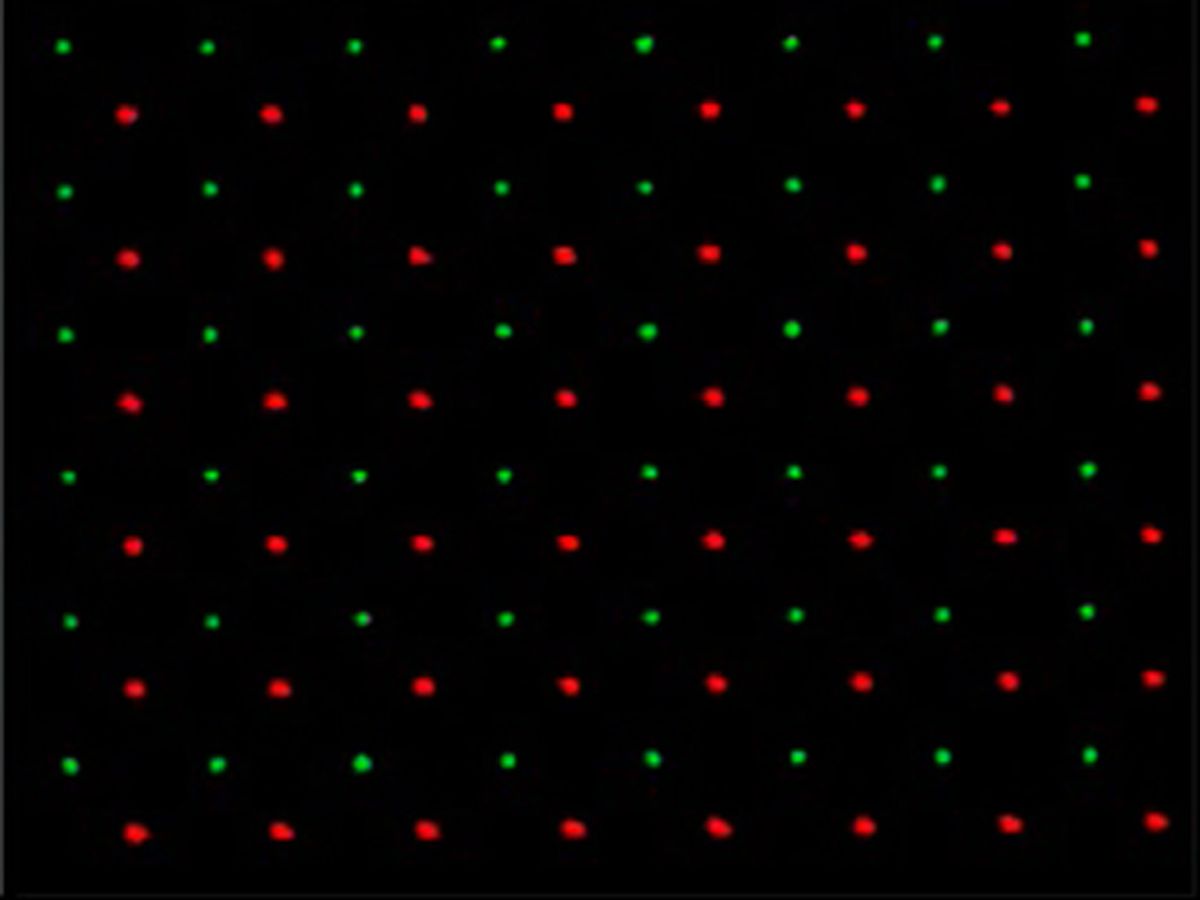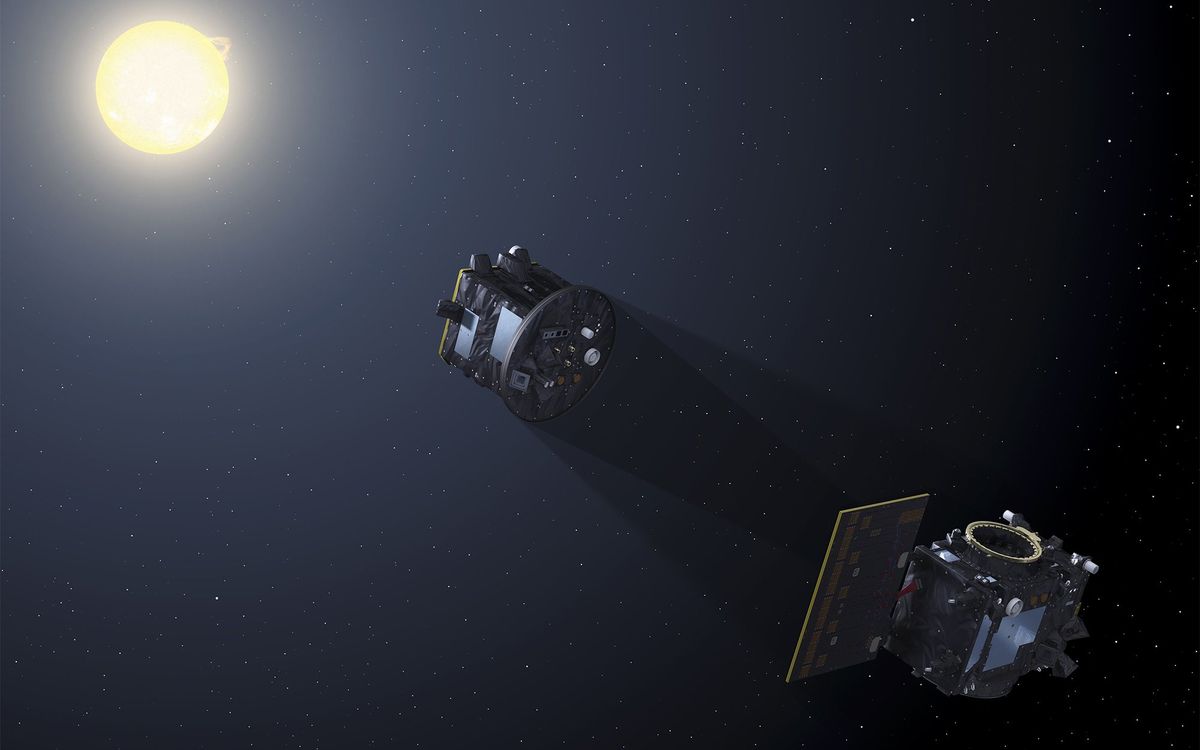Using a technique much like inkjet printing, engineers have created high-resolution patterns of quantum dots. Quantum dots (QDs) are light-emitting semiconductor nanocrystals that, used in light-emitting diodes (LEDs), hold the promise of brighter, faster displays. But there is no reliable and efficient way to pattern them at a high resolution to create multicolor pixels for displays.
John Rogers, a materials science and engineering professor at the University of Illinois in Urbana-Champaign, and his colleagues are repurposing a printing method they devised for other applications. When used with “QD ink,” it can create lines and spots that are just 0.25 micrometers wide. They made arrays and complex patterns of QDs in multiple colors, and could even print QDs on top of others of a different color. They sandwiched these patterns between electrodes to make bright QD LEDs. Details about the results were published in the journal Nano Letters.
Quantum dot TVs were big at the 2015 Consumer Electronics Show (CES) in Las Vegas. Companies such as Sony, Samsung and LG all have their own version. But the TVs demoed at CES use QDs along with blue inorganic LEDs to create a white backlight. The white light is beamed through color filters at each pixel to generate any color. The quantum dots are simply filled in a tube or painted on the entire backpanel; they don’t need to be patterned.
But companies such as QD Vision and Samsung seek a true QD display, wherein red, green and blue QD LEDs glow at each pixel. QD LED displays would be rich and vibrant thanks to the pure, bright glow of QDs. They would also be efficient and affordable because QDs require very little energy to light up, and they can easily be made into inks and printed.
Seems simple, doesn’t it? It was—except for the fact that no one had been able to print with these inks. The best that researchers had been able to do, Rogers told IEEE Spectrum, was print QDs on a surface using a patterned rubber stamp. But that wouldn’t cut it for mass production.
So Rogers and his team turned to a technique called electrohydrodynamic jet, or e-jet printing, which they developed and used to print patterns of DNA and carbon nanotubes.
The print tool in this case is a metal-coated glass capillary tube with a 5-micrometer nozzle at the end. A pneumatic system pushes the QD ink in the tube just enough that it bulges out of the tip. A voltage bias applied between the capillary and a metallic surface forces free ions in the ink to accumulate in that bulging ink drop.
“As those deposit, they deform the shape of the meniscus from circular to conical,” Rogers explains. “That terminates in the formation of droplets at the tip of the cone.”
The droplets, which are printed on the surface, are much smaller than the nozzle tip because they’re generated from the fluid cone rather than the nozzle itself.
Compared to stamping, he says, “We can do more diverse geometries more easily. There’s an inherent versatility in patterning. And we also eliminate any possible chemical contamination due to contact with the stamp surface.”
The researchers can print QDs on pretty much any surface as long as they lay it on a metal backplane. That means they could print on flexible surfaces, which is an exciting prospect for displays as well as lighting.
The ability to print QDs on top of other QDs, meanwhile, offers a new way to do color mixing. “In a display having separate RGB pixels at each location is one way,” Rogers says. “But you can also imagine mixing red and green by printing on top of one another. You could generate LEDs with any emission color at all by mixing and matching multiple quantum dots.”
Rogers says his team is now working on creating arrays of multiple nozzles, which would be important for manufacturing. Inkjet printers usually have a few hundred nozzles. The difficulty with the e-jet printing method is that the electric field at one nozzle affects the fields of neighboring nozzles. So the engineers are trying to figure out how to isolate nozzles in order to eliminate that crosstalk.
Prachi Patel is a freelance journalist based in Pittsburgh. She writes about energy, biotechnology, materials science, nanotechnology, and computing.



